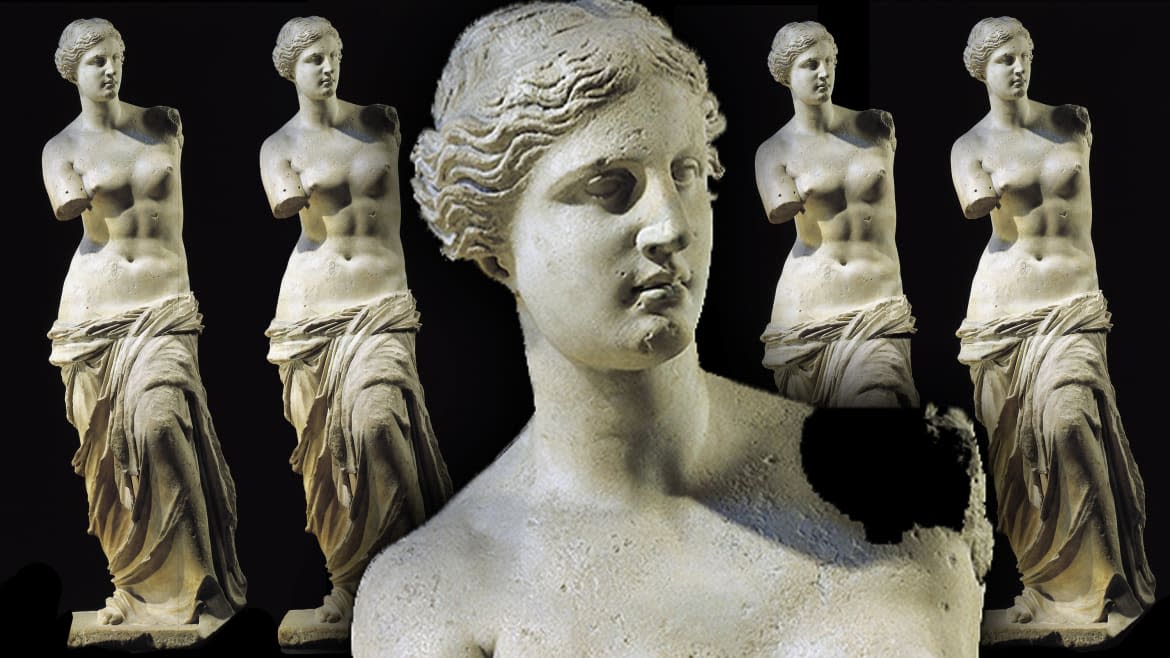Mysteries Around Antiquity’s Favorite Pimp Could Be Unlocked by Temple Discovered in Turkey

Archaeologists in Western Turkey have announced that they discovered a sixth century B.C. temple dedicated to the ancient Greek goddess Aphrodite. Aphrodite’s popularity in the region means that the discovery was not entirely unexpected. However, the discovery provides archaeologists with the opportunity to dig deeper into the religious practices associated with the goddess and discover the truth about the scandalous behavior that was rumored to go on at her temples. According to many, Aphrodite wasn’t just a goddess, she was antiquity’s favorite pimp.
The temple was discovered when a team of archaeologists, led by Elif Koparal of Mimar Sinan Fine Arts University, unearthed remnants of a statue of a woman and an inscription that reads “this is the sacred area.” Koparal and her team found the items in the ancient city of Aphrodisias in the southeast of Urla-Çeşme peninsula in Turkey. The ancient city was named after the famous goddess of love and beauty and so the team expected that there would be a cultic center somewhere in the area.
While all gods of Mount Olympus had temples and shrines dedicated to them throughout the ancient Mediterranean, and all of these sites attracted tourists and pilgrims, there is something about the cult of Aphrodite that sets it apart. If ancient people visited the religious centers dedicated to Asclepius looking for health care and healing, they visited Aphrodite’s temples in search of a good time.
The ancient geographer and historian Strabo wrote that the Temple of Aphrodite in Corinth “was so rich that it owned more than a thousand temple courtesans” and noted that many of the sailors who passed through the coastal city squandered their wages at the temple. According to the ancient writer Pindar, a wealthy athlete, Xenophon of Corinth, had dedicated a throng of courtesans to the temple in 464 B.C. after he won at the Olympic Games. Strabo adds that similar activities involving enslaved sex workers took place at the Temple of Aphrodite in Eryx. We are told that women who were looking to raise money for their dowries would prostitute themselves at temples dedicated to Venus (Aphrodite’s equivalent). The temples of Aphrodite, our sources lead us to believe, were a religious kind of brothel where women worked as sacred prostitutes and religious ecstasy looked a lot like, well, other forms of ecstasy.
The historian Herodotus claims that in Babylon there was a temple devoted to “Aphrodite” where every woman in the country—both rich and poor alike—had to serve as a prostitute at least once in her lifetime. Herodotus recounts how women sat in the temple precinct waiting to be chosen by male patrons and were unable to reject any suitor or amount of money. Having discharged her duties she could then return home. Herodotus writes that attractive women were quickly selected but that the less good looking sometimes had to wait up to four years to go home.
Herodotus’s tale, however, isn’t actually about Aphrodite but, more likely Mullissu, a Babylonian goddess that he equated with Aphrodite. He’s describing Babylonians, or outsiders, and often describes the strange and “barbaric” practices of uncivilized peoples to his Greek audience. Elsewhere in his work he refers to cannibalism, incest, and a tribe of one-eyed people—so it’s worth taking his observations with a hefty pinch of salt.
Similar ambiguities surround the Bible’s references to the sex trade. The Bible has a number of words for sex worker but one of them, Qdesha, means “set apart” and comes from the same root word as the term for “holy.” The wordplay has led some to suggest that these women were sacred prostitutes like those Herodotus places in Babylon, but these women might have been sex workers who worked in the vicinity of temples, or just consecrated women who worked in ancient Canaanite temples. As University of Michigan professor Jessie DeGrado has explained in their work there’s no real evidence for sacred prostitution in the ancient Middle East. We should think of this term as referring to women employed outside of the home who might have worked as priestesses of prophets but never both at the same time.
Even when it comes to Greece and Rome some have questioned just how widespread sacred prostitution actually was. Most of our ancient references are dependent on two sources: Herodotus and Pindar. In her book The Myth of Sacred Prostitution in Antiquity, Stephanie Budin argues that “Sacred prostitution never existed in the ancient Near East or Mediterranean.”
Part of the problem, Budin shows, is that sacred sex is regularly confused with sacred prostitution but there are also language problems. Sometimes enslaved women who were sold to the temple (a common form of ancient manumission) and became “sacred slaves” are confused with prostitutes. Translational issues with Akkadian and ancient Greek often lead people to conclude that someone was a prostitute when in fact they were a priestess or an enslaved worker. Both Herodotus and the later Christian writers who used him used these stories of sensual prostitutes to discredit and barbarize the cultures of which they were a part.
If temple prostitution sounds sexy, exotic, and, heck, a whole lot more fun than regular church that was probably the point. Stories about the taboo-breaking sexual behavior of foreign women have always been a source of intrigue. There probably were some instances of ritualized sacred sex and prostitution, but it wasn’t as common as readers of Herodotus, Pindar, and Strabo thought. None of this means that you shouldn’t visit the temples of Aphrodite, but if it’s ancient brothels you’re looking for you should try Pompeii.
Get our top stories in your inbox every day. Sign up now!
Daily Beast Membership: Beast Inside goes deeper on the stories that matter to you. Learn more.

 Yahoo News
Yahoo News 
